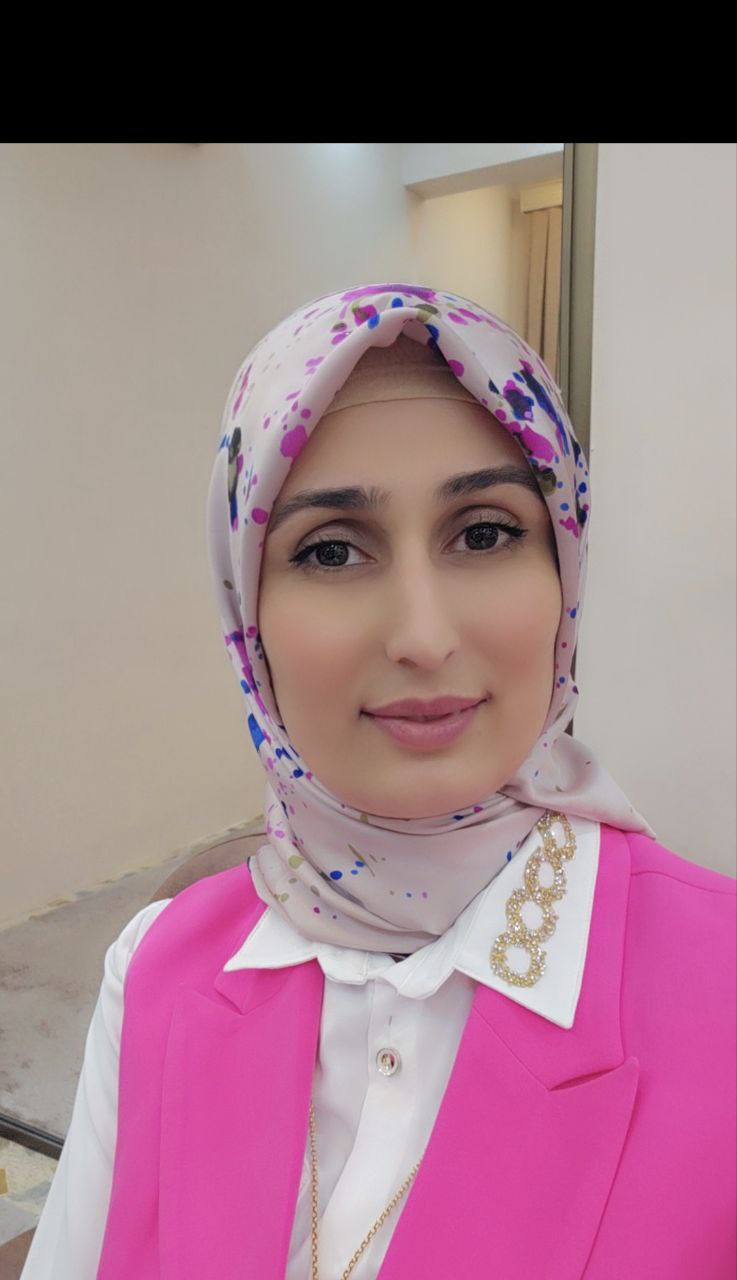
Yeldez Jingeez Subhi
Research Interestsoptimization
Numerical Analysis
Dali Analysis
Algabra
| Gender | FEMALE |
|---|---|
| Place of Work | College of Oil & Gas Techniques Engineering / Kirkuk |
| Department | Renewable Energy Techniques Department |
| Position | مسؤولة وحدة ضمان الجودة |
| Qualification | Master’s |
| Speciality | Mathematics |
| yeldez.j.subhi@ntu.edu.iq | |
| Phone | 07722370470 |
| Address | Kirkuk/Alwasite, Kirkuke, Kirkuk, Iraq |
Skills
اللغة التركمانية (100%)
اللغة الانكليزية (65%)
اللغة الانكليزية (65%)
اللغة الانكليزية (65%)
اللغة العربية (70%)
اللغة الكردية (75%)
اللغة التركية (86%)
Academic Qualification
ماجستير
Sep 20, 2020 - Nov 7, 2022بكلوريوس
Dec 1, 2012 - Jun 20, 2015Working Experience
رياضيات /تحليل عددي [العمل في جامعة كركوك /كلية طب الاسنان]
Oct 8, 2018 - Sep 20, 0019رياضيات /تحليل عددي [العمل في مديرية تربية كركوك /مدرسة ثانوية الانتصار المختلطة]
Sep 15, 2017 - Jun 29, 2018رياضيات /تحليل عددي [تدريسية ومقررة قسم في جامعة الكتاب /كلية هندسة النفط]
Apr 29, 2023 - Aug 16, 2024رياضيات /تحليل عددي [العمل كتدريسية في الجامعة التقنية الشمالية / كركوك]
Sep 25, 2024 - PresentPublications
NUMERICAL AND CONVERGENCE ANALYSIS OF AN ENHANCED DAI-LIAO METHOD FOR UNCONSTRAINED OPTIMIZATION
Sep 1, 2025Journal Journal of Mathematics and Its Applications
publisher Basim A.Hassan@!",Ibrahim Mohammed Sulaiman، Yeldez J.Subhi
DOI https://doi.org/10.30598/barekengvol19no4pp2993-3004
Iterative algorithms play an important role in mathematical optimization,particularly in soving Articde History: radient (CG) methods are large-scale unconstrained optimization problems. The conjugate gradient( Received:29 2025 widely used due to their low memory requirements and efficiency.However,their performance Revised: 29mApril 2025 highly depends on the choice of parameters that influence search directions and convergence Accepted:10"Jhune 2025 speed. Despite their advantages, traditional CG algorithms sometimes suffer from slow Available onlin convergence or poor accuracy,especia September 2025 gradient parameters significantly influences the performance, and there is a need to develop improved stralegies to enhance solutιon accuracy and efιciency
Solving single variable functions using a new secant method
Feb 13, 2025Journal Journal of Interdisciplinary Mathematics
publisher Hawraz N. Jabbar $ /Yeldez J. Subhi @ / Hakeem N. Hussein * Basim A. Hassan ^
DOI https://doi.org/10.47974/JIM-1854
Issue 0972-0502 (Print), ISSN: 2169-012X (Online)
Volume 28 (2025), No. 1, pp. 245–251
The quadratically convergent Newton method is a fundamental and significant approach for solving one-variable functions. In order to solve a single minimization issue, we deduce a novel secant type approach in this study that is based on estimating the second derivative information. The convergence of the novel secant type iterative approach is of order
On new secant-method for minimum functions of one variable
Feb 13, 2025Journal Journal of Interdisciplinary Mathematics
publisher Ali M. Jasim , Yeldez J. Subhi & Basim Abbas Hassan
DOI https://doi.org/10.47974/JIM-1899
Issue 0972-0502 (Print), ISSN: 2169-012X (Online)
Volume 28 (2025), No. 1, pp. 291–296
In this article, we developed the Newton method by utilizing the Taylor series to estimate derivatives based on the function’s minimum value. The aim was to reduce the number of iterations required to obtain the optimal solution of the function. We compare the execution time and number of iterations between the proposed approach and the classical
Impact to formula gradient impulse noise reduction from images
Oct 15, 2024Journal Journal of Interdisciplinary Mathematics
publisher Isam H.Halil/ Yeldez J. Subhi / Basim A. Hassan ^
For the majority of image processing techniques and applications,denoising a photo is a mıst. The Taylor series is used to suggest a new conjugate gradient scalar. Together with the descent property,the novel fornula satisfies the convergence properties.Lastly, we provide a few illustrations of picture restoration using; the suggested conjugate gradient technique.
Enhancements Self-Scaling Quasi-Newton for Unconstrained Optimization
May 5, 2024Journal Advances in Nonlinear Variational Inequalities
publisher Basim A. Hassan, Hakeem N. Hussein, Yeldez J. Subhi, Yoksal A. Laylani, Hawraz N. Jabbar, Mohammed W. Taha
DOI https://doi.org/10.52783/anvi.v27.974
Issue 1092-910X
Volume Vol 27No. 2(2024)
A self-scaling for the quasi-Newton tecnique is derive by using a second_order Taylor's expansion to achieve optimal computational performance. Following this, new updating formulas for the quasi-Newton method are introduced based on the newly derived self-scaling equation. The numerical results confirm this derivation and suggest that the new method could potentially rival the BFGS method in terms of performance.
Image Impulse Noise Reduction Using a Conjugate Gradient of Alternative Parameter
Jul 30, 2023Journal EUROPEAN JOURNAL OF PURE AND APPLIED MATHEMATICS
publisher Hawraz N. Jabbar Yeldez J. Subhi Basim A. Hassan
DOI https://doi.org/10.29020/nybg.ejpam.v16i3.4849
Issue Vol. 16 No. 3: (July 2023)
Volume Vol. 16 No. 3: (July 2023)
Conjugate gradient approaches emphasise the conjugate formula. This study creates a new conjugate coefficient for the conjugate gradient approach to restore pictures using Perry’s conjugacy condition and a quadratic model. Algorithms have global convergence and descent. The new technique performed better in numerical testing. The new conjugate gradient technique outperforms the FR method. The new technique performed better in numerical testing. The new conjugate gradient technique outperforms the FR method.






